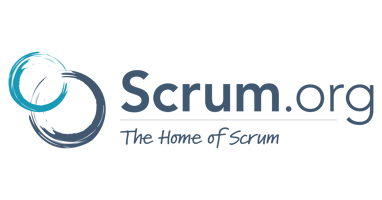Agile Methodology News
Scrum
316

Image Credit: Scrum
Scrum Master Choices: Professionalising the ‘Mentor’ Stance (Scrum Master as a Mentor Blog Series #1)
- Scrum.org's Scrum Master skill wheel includes 8 choices such as Teacher, Mentor, Coach, Facilitator, and more, which are crucial for success.
- The role of a Scrum Master as a mentor is about creating conditions for others to succeed through clarity, ethics, and consistent presence.
- Mentoring fosters long-term growth through trust, shared reflection, and voluntary guidance, different from coaching.
- Professionalising the mentor stance involves intentional practice, precise language, and clear boundaries, moving it from an instinctual to a structured approach.
- Five core principles of professional mentoring include Consent, Safety, Restraint, Relevance, and Integrity, focusing on mutual consent, psychological safety, intentional restraint, relevance, and integrity.
- Consent in professional mentoring begins with mutual agreement, ensuring a strong foundation for the mentor-mentee relationship.
- Safety is crucial in mentoring to create a conducive learning environment where individuals feel safe to express doubts and explore alternatives.
- Restraint in the mentor stance emphasizes supporting and guiding rather than imposing solutions or corrections, promoting the autonomy of the mentee.
- Relevance is essential in mentoring to provide impactful guidance that is connected to the current context and challenges faced by the mentee.
- Integrity is a key aspect of mentoring, emphasizing confidentiality, consistency, and the purpose of supporting the growth of others ethically and authentically.
Read Full Article
19 Likes
Medium
316

Image Credit: Medium
The Two-Stroke Engine of Pragmatic Development: Sharpen Your Axe, Then Fire Tracer Bullets
- Embrace the two timeless principles of sharpening your axe and firing tracer bullets to build smarter and conquer complexity in software development.
- Sharpening the axe involves upfront investment in understanding, planning, and design before diving into coding, ensuring productive progress towards the right goal.
- Firing tracer bullets means creating a lean, end-to-end slice of functionality early on to validate the aim and prevent wasted time on faulty assumptions, forming a feedback loop for efficient development.
- By combining the approach of sharpening the axe for understanding and planning with firing tracer bullets for validation and efficiency, engineers can shift from reactive problem-solving to proactive risk management, ultimately building better software with foresight and precision.
Read Full Article
19 Likes
Scrum
79

Image Credit: Scrum
Upstream Kanban: 7 Essential Metrics for Product Backlog Management
- Upstream Kanban is designed to uncover new knowledge and assess delivery options in a creative, collaborative, and unpredictable manner.
- Specific metrics are essential for Upstream Kanban to guide agile decision-making, portfolio management, and product development.
- This article outlines seven essential metrics for Upstream Kanban usage in different contexts.
- Upstream Kanban is the research phase where ideas are brainstormed, evaluated, and prioritised before committing to them.
- It helps in managing the flow of incoming requests, prioritising work effectively before execution.
- Metrics in Upstream Kanban focus on maintaining a healthy variety and quality of options, preventing overburdening, and guiding investment between upstream and downstream work.
- Tracking metrics over time in Upstream Kanban reveals trends, patterns, and helps in making evidence-based decisions for continuous improvement.
- The choice and evaluation of metrics may vary across organizations, with room for enhancement and adoption.
- Upstream Kanban emphasizes managing options to ensure the most valuable initiatives are focused on before committing to execution.
- Metrics are crucial in guiding decision-making in Upstream Kanban, and a set of seven essential metrics is recommended for empirical decisions.
Read Full Article
4 Likes
Dev
181

Image Credit: Dev
Your Agile team might be losing productivity without you realizing it!
- Context switching is a major problem affecting Agile team productivity.
- Studies show that switching tasks can cost up to 40% of productive time.
- It takes an average of 23 minutes and 15 seconds to refocus after an interruption.
- Solutions to reduce context switching include setting up 'no interruption' time blocks, prioritizing tasks, using the Pomodoro Technique, and improving async communication.
Read Full Article
10 Likes
Discover more
- Programming News
- Software News
- Web Design
- Devops News
- Open Source News
- Databases
- Cloud News
- Product Management News
- Operating Systems News
- Computer Engineering
- Startup News
- Cryptocurrency News
- Technology News
- Blockchain News
- Data Science News
- AR News
- Apple News
- Cyber Security News
- Leadership News
- Gaming News
- Automobiles News
Scrum
211

Image Credit: Scrum
Strategic Portfolio Planning in UK Government
- Portfolio planning in the UK Government faces challenges due to shifting political priorities, finite public resources, and complex delivery landscapes.
- Agility is crucial in government portfolio planning to respond coherently and quickly to changes in political leadership and budget constraints.
- Frequent ministerial changes and annual budget limitations hinder long-term planning and adaptive decision-making in government portfolios.
- Agility allows for adjustments in direction while maintaining coherence and continuity in government portfolios.
- Annual budget cycles in central government prioritize in-year spending over cross-year optimization, emphasizing hitting financial forecasts over delivering measurable outcomes.
- Agile portfolio management focuses on incremental value delivery rather than annual milestones, de-risking spending decisions by showcasing early impact.
- Hypothecated funding in government portfolios limits flexibility, hindering reallocation of funds to maximize public value across different programs.
- Agile portfolio planning calls for more flexibility in financial architecture, with pre-approved reallocation mechanisms and broader delegation for responsible governance.
- Embedding agile mindsets in government portfolio planning requires decision-makers to value iteration, responsiveness, and learning.
- Strategic reviews, empowered portfolio boards, integrated portfolio offices, and value-led metrics support agility in government portfolios.
Read Full Article
12 Likes
Kanbanzone
220

Image Credit: Kanbanzone
Moving Mountains (Literally & Figuratively) with Kanban
- The author shares their experience of using Kanban during a cross-continental move to Canada's Laurentian mountains.
- Kanban helped organize tasks and provided a sense of progress, potential, and daily motivation.
- The article emphasizes how each card on the Kanban board symbolizes a step in the transition process.
- Sections on the board ranged from research and packing to language learning and community integration.
- The author found comfort in seeing tasks shift to the 'Done' section, marking accomplishments in the move.
- The Kanban board served not just for managing tasks but also for tracking courage and embracing change.
- The author highlights the importance of progress over perfection in navigating new beginnings.
- The article mentions a Personal Kanban class on Modus Institute for those interested in using Kanban effectively.
- Kanban provided a tool for managing emotions, expectations, and excitement during the transition.
- The journey showcased how Kanban aided in visualizing work, limiting WIP, and adapting to a fresh start.
Read Full Article
13 Likes
Scrum
189

Image Credit: Scrum
Why the Scrum Guide is Purposefully Incomplete, and why that’s a good thing!
- The Scrum Guide is purposefully incomplete to allow for flexibility and adaptation to different contexts.
- It defines only essential elements such as Scrum Theory, Values, Accountabilities, Events, and Artifacts, leaving the rest open to individual interpretation.
- This approach supports empiricism and self-management, empowering teams to design their processes based on their specific needs.
- Professional Scrum teams are encouraged to experiment, evolve, and customize their ways of working within the Scrum framework.
Read Full Article
11 Likes
Alvinashcraft
176

Dew Drop – May 8, 2025 (#4415)
- Several articles related to .NET development, Azure, and AI are featured in the Dew Drop newsletter for May 8, 2025.
- Topics covered include responsive dashboard application in Angular, Blazor AI chat application, WinUI, .NET MAUI, XAML popups, and chart selection guide in .NET MAUI.
- There are articles on generating ZUGFeRD-compliant invoices in .NET, Service Pack releases in TX Text Control, and building a startup in C#.
- AI-related articles discuss model distillation, Figma's AI update, Azure OpenAI models, chat completions in Azure Logic Apps, and AI risks.
- Design and methodology topics cover legacy system modernization, productivity habits, and intelligibility measurement for content.
- Mobile, IoT, and game development articles focus on Android camera experiences, Flutter app publishing, and Raspberry Pi OS.
- Database-related topics include SQL Server temporal tables, database caching, Azure Cosmos DB updates, and Azure Storage usage.
- SharePoint, M365, and MS Teams articles cover AI updates in SharePoint, OneDrive enhancements, Office Add-in accessibility, and OneNote improvements.
- Miscellaneous articles touch on energy-saving programs, CDC committee shutdown, logging in Rust, Microsoft's environmental initiatives, and quantum technology leadership.
- The newsletter also includes links to podcasts, screencasts, upcoming events, and more curated content for readers in the tech community.
Read Full Article
10 Likes
Medium
172

Image Credit: Medium
Agile or Chaos? Lessons from a Startup That Confused Both
- A startup that thought it was following Agile principles realized it was actually functioning in chaos, despite using the right terminology and tools like Jira.
- The team faced constant stress, changing priorities, half-tested features, blame sessions during retrospectives, and delayed documentation.
- The distinction between being truly Agile and being unstructured lies in how change is managed - Agile empowers learning and quick response, while chaos stems from change being the only framework.
- Lessons learned include the need for a clear vision as an anchor, defining processes for clarity and strategy, being selective with feedback implementation, and incorporating mid-sprint check-ins to maintain alignment.
Read Full Article
10 Likes
Scrum-Master-Toolbox
287

BONUS: Beyond Frameworks, A Provocative Guide to Real Agility With Erwin Verweij
- Erwin Verweij's book 'How the f*ck to be Agile?' critiques organizations adopting Agile frameworks without understanding their purpose.
- His wake-up call challenges teams to move beyond dogmatic practices and find their own path to meaningful change.
- Rather than imposing rigid frameworks, Erwin encourages teams to discover what works best for them in their context.
- He emphasizes the importance of observing what is effective, adapting processes, and taking ownership of their ways of working.
- Erwin views agility as a continuous journey of adaptation and experimentation, promoting a culture of openness to change.
- He questions the need for scaling Agile and advocates for a pragmatic approach that focuses on what works for each team.
- Software development is seen as a creative process by Erwin, emphasizing problem-solving and iterative approaches over rigid planning.
- Erwin highlights the suppression of organizational intelligence and challenges companies to create environments that value individual decision-making.
- Erwin Verweij, a seasoned Agile Coach, helps organizations embrace real agility by cutting through complexity to spark courage and action.
- Join the Global Agile Summit 2025 in Tallinn, Estonia, to connect with global Agile leaders and learn practical Agile strategies.
Read Full Article
17 Likes
Dev
75

Image Credit: Dev
Scrum Artifacts Explained: The Backbone of Agile Project Transparency
- Scrum artifacts, such as the Product Backlog, Sprint Backlog, and Increment, are essential tools in Agile development for transparency, alignment, and guiding decision-making.
- The Product Backlog serves as a prioritized list of all desired features and enhancements maintained by the Product Owner.
- The Sprint Backlog represents the team's commitment to delivering selected features within a time-boxed iteration, owned and updated by the Development Team.
- The Increment is the sum of completed Product Backlog items and previous Sprints, focusing on usability and adherence to the Definition of Done.
Read Full Article
4 Likes
Scrum
30

Image Credit: Scrum
Scrum, Innovation and the Double Diamond
- Scrum, a lightweight framework for addressing complex problems through empirical process control, shares critical principles with the Double Diamond model.
- Scrum's approach, focusing on transparency, inspection, and adaptation, creates a conducive environment for innovation by embracing empiricism.
- The psychological climate fostered by Scrum values like focus, openness, courage, commitment, and respect supports collaborative innovation.
- The Double Diamond model, developed by the UK Design Council, guides innovation through structured problem exploration and solution development.
- Scrum and the Double Diamond model align naturally, with Scrum practices supporting problem framing and solution development stages.
- Scrum's time-boxed Sprints provide a cadence for solution development, enhancing the iterative nature of problem-solving.
- Scrum Masters facilitate learning and experimentation within teams, fostering a culture of innovation and open inquiry.
- The integration of Scrum and the Double Diamond model reframes team roles, emphasizing learning, clarity, and structured exploration.
- Together, Scrum and the Double Diamond offer a way to innovate within constraints, avoiding premature convergence and supporting informed experimentation.
- By combining these models, teams can embed innovation into their daily rhythm, transforming both what is built and how it is built.
Read Full Article
1 Like
Scrum-Master-Toolbox
225

BONUS: From Waterfall to Flow—Rethinking Mental Models in Software Delivery With Henrik Mårtensson
- Henrik Mårtensson delves into the origins of waterfall methodology, tracing it back to the SAGE project in the 1950s.
- Waterfall methodology was not invented by Winston Royce but emerged as a formal methodology post the SAGE project.
- Henrik challenges the mental models that perpetuate waterfall thinking in modern organizations.
- Outdated mental models like Frederick Taylor's scientific management principles contribute to the persistence of waterfall approaches.
- Henrik emphasizes the importance of systems thinking, Deming’s principles, and understanding variation in reshaping software development practices.
- An anecdote by Henrik illustrates how estimation in software development can be misled by architectural complexities.
- Henrik recommends understanding queueing theory and Little’s Law to enhance workflow management and delivery predictability.
- Join Henrik Mårtensson at the Global Agile Summit 2025 to explore real-world Agile success stories and practical strategies.
- Henrik Mårtensson, a management consultant, blends Theory of Constraints, Lean, Agile, and Six Sigma to tackle complex challenges in organizations.
- Connect with Henrik Mårtensson on LinkedIn for insights on strategy, organizational development, and process improvement.
Read Full Article
13 Likes
Medium
252

Image Credit: Medium
Beyond Agile: Why Facebook, Apple, Amazon, Netflix, Google, and Microsoft Didn’t Need Scrum
- The largest tech companies like Facebook, Apple, Amazon, Netflix, Google, and Microsoft did not widely adopt Agile frameworks like Scrum as many other businesses did in the mid-2000s.
- These tech giants already had existing engineering cultures, practices, and organizational structures that achieved Agile's goals without the need for formal implementation.
- The Agile Manifesto of 2001 changed software development by promoting values such as individuals and interactions, working software, customer collaboration, and responding to change.
- Despite the widespread adoption of Agile methodologies like Scrum and Extreme Programming, these tech companies had processes in place that aligned with Agile principles and delivered results efficiently.
Read Full Article
15 Likes
Scrum
0

Image Credit: Scrum
Burnout on the Scrum Team
- Burnout on a Scrum team can impact collaboration, delivery speed, and creativity, hindering the ability to build great products.
- Recognizing signs of burnout like missed commitments or disengagement is crucial in preventing its spread within the team.
- Self-management is key to preventing burnout in Scrum teams, where developers own the Sprint Backlog, Product Owners own the Product Backlog, and teams have autonomy over work and composition.
- Empowered, self-managing teams in Scrum are more resilient, effective, and innovative, leading to better outcomes and preventing burnout.
Read Full Article
Like
For uninterrupted reading, download the app